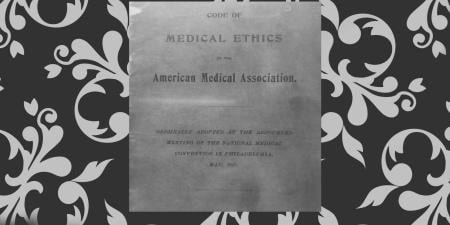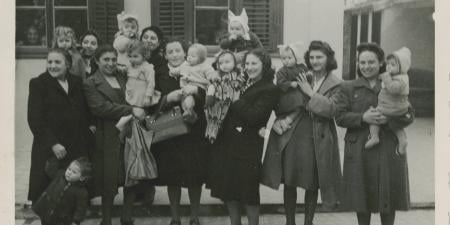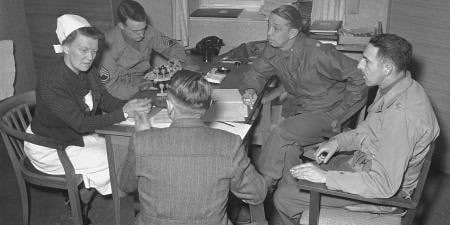Abstract
This case and commentary explore health professionals’ duties to advocate for individual patients, protect their communities, and navigate conflicts between them. The perils of physicians intentionally harming individuals in misguided attempts to strengthen a community have been illuminated by the Holocaust. It is too simplistic to say, however, that public health can never outweigh individual preferences or even needs. The commentary herein articulates criteria that might justify physicians taking action to protect the public that is contrary to their individual patients’ interests.
Case
Mr P is a 76-year-old widower who lives alone and supports himself by working as a truck driver. He needs the income from this job because he suffers from diabetes and hypertension, both of which are controlled by medications that, despite having become increasingly expensive, he must take regularly.
A few weeks ago, he accidentally drove his truck into a wall. Witnesses called an ambulance. Mr P was awake when the ambulance arrived, and he told the emergency medicine technicians that he had not lost consciousness, although he wasn’t sure where he was or how he got there. When he arrived at the emergency department, he again said he had no memory of how the accident happened, and he asked where he was. Mr P was admitted to a general medicine unit for further evaluation.
Laboratory work and imaging were ordered to exclude hypoglycemia or stroke, and they were negative. Over the next several hours, Mr P’s short-term memory improved and returned to normal, although he still did not remember how the accident happened. A diagnosis of transient global amnesia was made; he was released after a few days and instructed not to drive, at least until his follow-up visit with Dr D, his internist. During Mr P’s postdischarge appointment with Dr D, he said he felt well and requested that he be allowed to return to driving.
Mr P’s state statute on physician reporting of impaired drivers states: “Drivers should self-report medical conditions that could cause a lapse of consciousness, seizures, etc. Physicians are encouraged to report patients who have a condition that could affect their ability to safely operate a motor vehicle.” This statute protects physicians who make such reports “in good faith.”
Dr D explains to Mr P that, although he questions the efficacy of reporting and is generally reluctant to do so, he feels obliged to report the accident to the state’s Department of Motor Vehicles, which will likely review Mr P’s case and determine whether Mr P can continue to drive his truck. Mr P is distressed at the prospect of not being able to support himself and begs Dr D not to report.
Commentary
This case suggests the importance of considering whether and when health professionals’ duties to act as state agents outweigh their duties to protect interests of their individual patients. Balancing these duties is difficult, yet often oversimplified, especially when considered in light of physician participation in the Holocaust.
If we assume a diagnosis of transient global amnesia (TGA) is accurate, this case is relatively straightforward. Dr D is not legally obligated to report Mr P to the Department of Motor Vehicles, but he is protected from liability should he choose “in good faith” to do so. Since the vast majority of patients with an episode of TGA never have another one and suffer no long-term impairment,1,2,3,4 there is little reason to believe Mr P poses a higher-than-average threat to others on the road than others of his general demographic group. In fact, his status as a 76-year-old man with hypertension and diabetes puts him at a greater than 50% risk of a cardiovascular event in the next 10 years,5 which means that he is at much greater risk of having a heart attack or stroke while driving than having a recurrent episode of TGA.6 Moreover, as Dr D notes, even if he were legally mandated to report patients who might be unsafe drivers, such reporting requirements are probably ineffective at reducing motor vehicle accidents.7 Rather, encouraging patients to self-report and voluntarily stay off the road seems to be a more evidence-based approach.8 Thus, it seems reasonable for Dr D to agree not to report Mr P and instead encourage him to take good care of his hypertension and diabetes and perhaps start a moderate-dose statin.5
Heath care ethics must include clinicians’ duties to serve individual patients and the community.
But this case also should prompt us to wonder when, if ever, it might be ethical for health professionals to act in ways that could harm individual patients to protect a larger community. The Holocaust is not the only example of physicians having made terrible miscalculations when weighing individual harm against community benefit. US physicians, for example, were directly involved in the torture of detainees at Guantanamo Bay, in covering up the murder of prisoners during interrogations in Afghanistan,9 and in performing an involuntary colonoscopy on a man at a New Mexico clinic whom police wrongly suspected of carrying drugs.10 Presumably, like Nazi physicians, these physicians considered their actions ethically defensible, perhaps because they thought they had to obey law enforcement or military officers or because they thought that harming their patient might somehow help a larger community. Both of these reasons are wrong, however, and not because health care ethics requires physicians never to act against an individual patient’s interests.
Physicians’ Duties to Communities
One might call an ethical stance that focuses exclusively on obligations to individual patients a “lawyerly version” of health care ethics,11 since lawyers are ethically obligated to do the best they can for every individual client and are generally not allowed to have conflicting duties to anyone else.12 There are 2 reasons this works for lawyers. First, there is another lawyer arguing for the other side, regardless of whether the conflict is with another party or with a state. Second, there is a neutral judge and sometimes a jury charged with rendering an impartial verdict. In health care professionalism, there is neither an opposing attorney nor a judge, and neither health care professionals nor patients like it when there is. Thus, to ensure that community interests are represented in health decisions that affect a community, heath care ethics must include clinicians’ duties to serve individual patients and the community, despite the fact that this dual commitment requires clinicians to balance them11 in cases like the one posed above. What is more, harms to society can result when clinicians get the balance wrong, and this is a lesson from the Holocaust.
Balancing Duties
As described in professional codes of ethics, case law, and government guidance, clinician must strive to provide quality care to all, use shared clinical resources wisely, and, when one of our patients poses a significant danger, help keep communities safe.13,14,15 Notably, following what state authorities tell clinicians to do is not among these duties. Furthermore, I have previously argued that there is significant social benefit to be derived from clinicians’ willingness and ability—recall nurse Alex Wubbles,16 for example—to stand up to a state actor who asks clinicians to do something contrary to core ethical values of their professions.17
But being willing or able to stand up to state authorities doesn’t always help clinicians balance their duties to individual patients against their duties to communities.11 Which criteria should be used to guide decisions about which duties clinicians owe to whom and when? Guidance is needed about when it might be ethically acceptable to act against an individual patient’s interests to protect a community. Such guidance exists for a few specific kinds of cases, such as breaching patient confidence when reporting infectious diseases18 or when limiting individual liberties to implement a needed quarantine.19 In general, there is a stronger argument for health professionals doing something that could harm an individual patient in order to protect a community under 5 conditions, which constitute criteria for taking such action.
Criteria
Imminent danger. When danger is imminent, urgent interventions—including interventions that might harm individual patients—are more easily justified. If potential harm to a community is in the distant future, there is time to try other interventions first, and more or stronger reasons must be offered to justify clinician action that could harm an individual patient. For Dr D, public danger is not imminent, as Mr P’s risk of near-term recurrent TGA is low.
Certainty and severity of public harm. If harm to a community is certain and will be severe, there is a stronger argument for a clinician performing an action that could harm an individual patient. For Dr D, the severity of harm could be high if Mr P has another event, but the odds of this happening are low.
Minimal potential harm to a patient. If harm to a clinician’s individual patient would be minimal in comparison to potential public harm generated by a clinician’s failure to act, there is a stronger argument for acting. In Dr D’s case, harm to Mr P from reporting would be significant.
Identifiability. If a potentially harmed person, place, or community is identifiable, there is a stronger argument for acting than if it is unclear who, if anyone, might be harmed. For Dr D, no identifiable person or place is at risk from Mr P’s continuing to drive.
Likelihood of harm prevention. There is a stronger argument for doing something that might harm an individual if there is more certainty about that action’s preventing harm. Dr D’s patient poses a low risk to the community, so a reporting intervention is not at all certain to reduce harm to the community.
More could be said about each of these criteria, and other considerations might be important in cases other than the one above, but these criteria provide general guidance for balancing clinicians’ duties to individuals and to communities. These criteria can also be used to help explain when, for example, physicians should move to isolate symptomatic patients or asymptomatic patients known to carry contagions that pose significant risk to the public.19
Conclusion
Health professionals are primarily bound to advocate for their individual patients but are also bound to act to protect the public. To balance these duties is not just to follow a law or obey an authority figure, no matter what, or to declare that clinicians must always put their individual patient first. Rather, it is to ensure that, whenever challenges to core health professional values arise, they are considered in light of transparently articulated criteria and carefully deliberated upon. As the Holocaust reminds us, blind obedience to state authority is not a health professional value.
References
-
Jan K, Chuin S. A case of recurrent transient global amnesia: don’t forget the hippocampal punctuate diffusion restriction. Oxf Med Case Reports. 2018;2018(6):omy025.
- Marazzi C, Scoditti U, Ticinesi A, et al. Transient global amnesia. Acta Biomed. 2014;85(3):229-235.
- Jäger T, Bäzner H, Kliegel M, Szabo K, Hennerici MG. The transience and nature of cognitive impairments in transient global amnesia: a meta-analysis. J Clin Exp Neuropsychol. 2009;31(1):8-19.
- Uttner I, Weber S, Freund W, Schmitz B, Ramspott M, Huber R. Transient global amnesia—full recovery without persistent cognitive impairment. Eur Neurol. 2007;58(3):146-151.
-
Cvriskcalculator. Heart Risk Calculator. Accessed February 23, 2020. http://www.cvriskcalculator.com/calculated?age=76&gender=1&race=0&total-chol=150&hdl=50&sbp=140&dbp=80&treated=1&diabetes=1&smoker=0
- Hodges JR, Warlow CP. Syndromes of transient amnesia: towards a classification. A study of 153 cases. J Neurol Neurosurg Psychiatry. 1990;53(10):834-843.
- Agimi Y, Albert SM, Youk AO, Documet PI, Steiner CA. Mandatory reporting of at-risk drivers: the older driver example. Gerontologist. 2018;58(3):578-587.
- Elgar NJ, Esterman AJ, Antic NA, Smith BJ. Self-reporting by unsafe drivers is, with education, more effective than mandatory reporting by doctors. J Clin Sleep Med. 2016;12(3):293-299.
-
Miles SH. The Torture Doctors: Human Rights Crimes and the Road to Justice. Georgetown University Press; 2020.
-
Hassan C, Bothelo G. $1.6 million settlement for man forced by cops to have enemas, colonoscopy. CNN. January 16, 2014. Accessed May 7, 2020. https://www.cnn.com/2014/01/16/justice/new-mexico-search-settlement/index.html
- Wynia MK. The short history and tenuous future of medical professionalism: the erosion of medicine’s social contract. Perspect Biol Med. 2008;51(4):565-578.
-
American Bar Association. Rule 1.7: Conflict of interest: current clients. Model Rules of Professional Conduct. Accessed June 16, 2020. https://www.americanbar.org/groups/professional_responsibility/publications/model_rules_of_professional_conduct/rule_1_7_conflict_of_interest_current_clients/
- Scheper A. AMA Code of Medical Ethics’ opinions related to organizational influence in health care. AMA J Ethics. 2020;22(3):E217-220.
-
Tarasoff v Regents of University of California, 13 Cal 3d 177 (1974).
-
National Highway Transportation Safety Administration, US Department of Transportation. Physician’s Guide to Assessing and Counseling Older Drivers. Chapter 7: Legal and ethical responsibilities of the physician. Accessed June 16, 2020. https://one.nhtsa.gov/people/injury/olddrive/olderdriversbook/pages/Chapter7.html#Anchor-6%20DiMa-55739
-
Utah nurse gets $500,000 in blood arrest row. BBC News. November 1, 2017. Accessed August 28, 2020. https://www.bbc.com/news/world-us-canada-41827040
-
Wynia MK. Civic obligations in medicine: does “professional” civil disobedience tear, or repair, the basic fabric of society? Virtual Mentor. 2004;6(1):30-32.
-
American Medical Association. Opinion 3.2.1 Confidentiality. Code of Medical Ethics. Accessed May 7, 2020. https://www.ama-assn.org/delivering-care/ethics/confidentiality
- Wynia MK. Ethics and public health emergencies: restrictions on liberty. Am J Bioeth. 2007;7(2):1-5.



